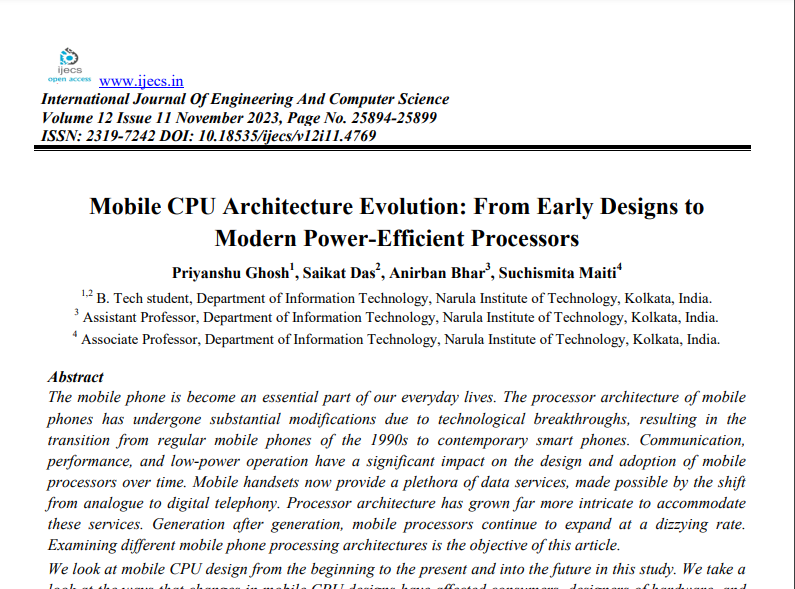
Downloads
Keywords:
Mobile CPU Architecture Evolution: From Early Designs to Modern Power-Efficient Processors
Authors
Abstract
The mobile phone is become an essential part of our everyday lives. The processor architecture of mobile phones has undergone substantial modifications due to technological breakthroughs, resulting in the transition from regular mobile phones of the 1990s to contemporary smart phones. Communication, performance, and low-power operation have a significant impact on the design and adoption of mobile processors over time. Mobile handsets now provide a plethora of data services, made possible by the shift from analogue to digital telephony. Processor architecture has grown far more intricate to accommodate these services. Generation after generation, mobile processors continue to expand at a dizzying rate. Examining different mobile phone processing architectures is the objective of this article.
We look at mobile CPU design from the beginning to the present and into the future in this study. We take a look at the ways that changes in mobile CPU designs have affected consumers, designers of hardware, and mobile devices as a whole. We take a look at how ten state-of-the-art mobile CPU designs that came out in the last seven years have changed over time. We detail the evolution of mobile CPU performance, power, energy consumption, and user happiness. To keep up with the power, performance, and energy gains required by mobile computing, specialized accelerators seem to be a viable alternative to desktop-like scaling, which is becoming increasingly difficult for mobile CPUs due to technological limitations. Based on our findings, there are various design considerations that should be made about the CPU's role in future systems on chips (SoCs) due to this paradigm change.
Article Details
Published
Issue
Section
License

This work is licensed under a Creative Commons Attribution-NonCommercial-ShareAlike 4.0 International License.

